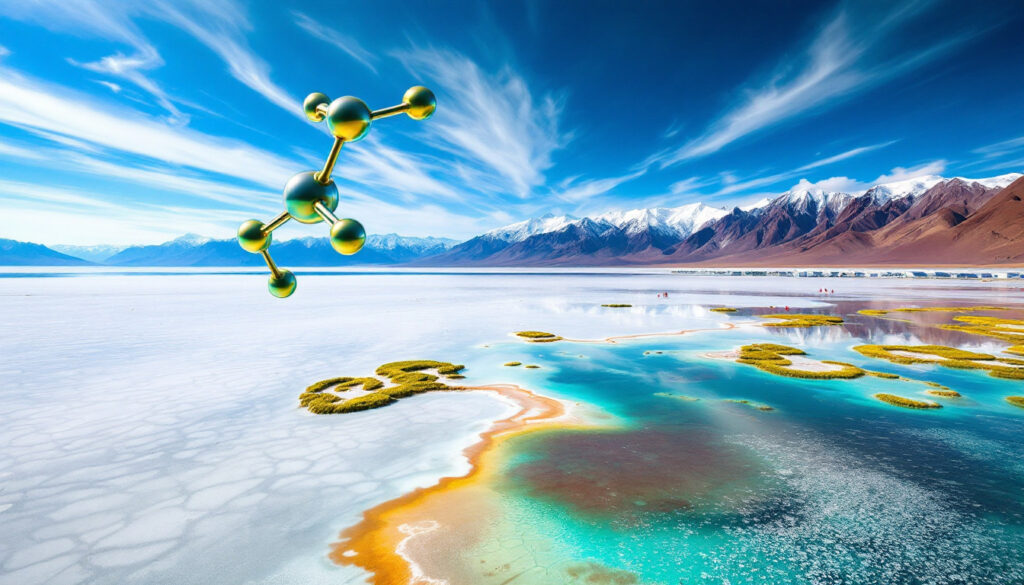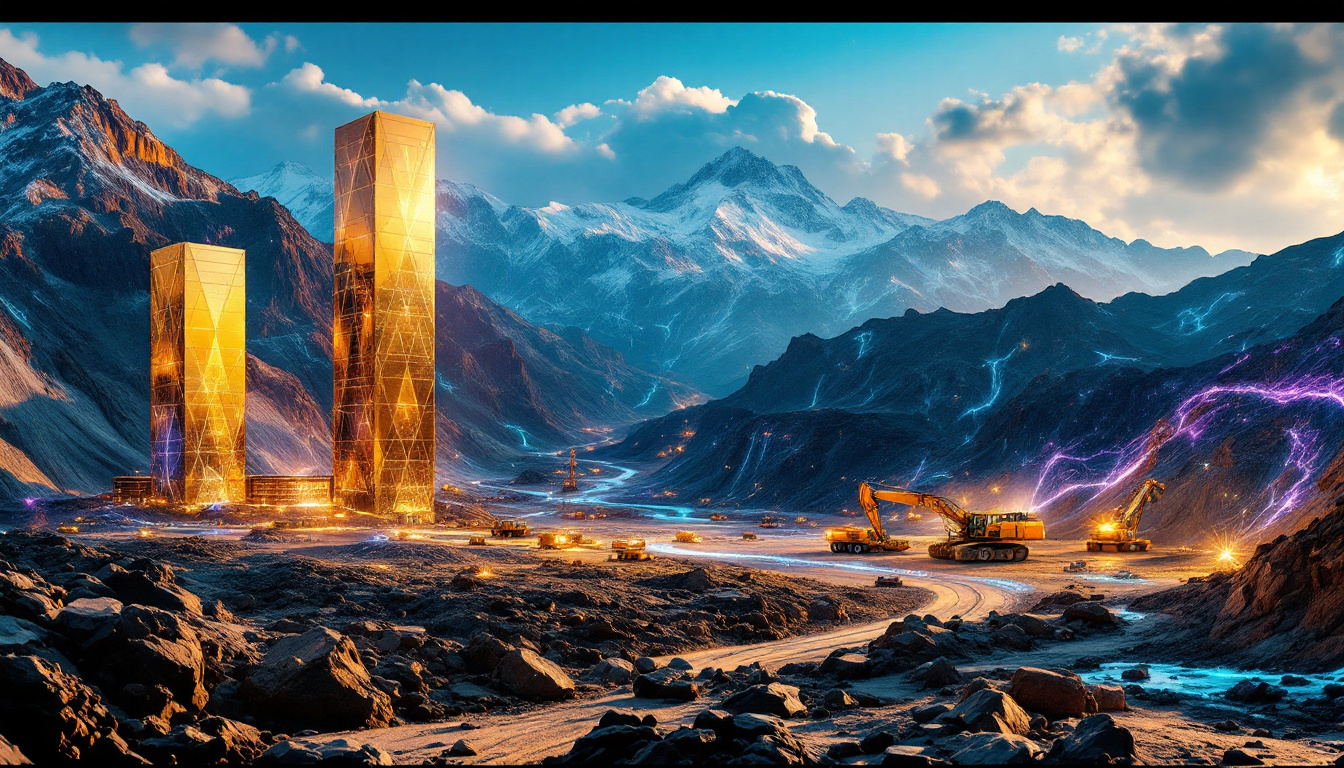The Challenges of Bolivia's Lithium Extraction Journey
Bolivia sits atop one of the world's greatest treasures—approximately 23 million tonnes of lithium resources, representing around 22% of global reserves according to the U.S. Geological Survey. Despite this incredible natural endowment, Bolivia has lagged significantly behind its Lithium Triangle neighbors Chile and Argentina in developing these resources into commercial production.
Why has Bolivia's vast lithium potential remained largely untapped while neighboring countries have built thriving lithium industries? The answer lies in a complex web of geological, technical, political, and environmental factors that make Bolivian lithium brines and direct lithium extraction among the world's most challenging to implement profitably.
Why Is Bolivia's Lithium Still Largely Untapped?
The Magnesium Problem
The primary obstacle to commercial lithium production in Bolivia is the exceptionally high magnesium-to-lithium ratio in its brines. The giant Salar de Uyuni—the world's largest salt flat and Bolivia's primary lithium resource—has a magnesium-to-lithium ratio of approximately 19:1, significantly higher than the 6:1 ratio found in Chile's Salar de Atacama and the remarkably favorable 1:1 ratio in Argentine lithium brine insights from the Hombre Muerto salar.
"Bolivia's lithium brines have such high magnesium content that traditional evaporation methods simply aren't economical," explains Jeremy Robinson of Cosmos Exploration, a company exploring technological solutions for Bolivian lithium extraction.
This high magnesium content creates substantial processing challenges:
- Magnesium must be removed using slaked lime (Ca(OH)₂) before brine processing
- This chemical treatment adds approximately 20-30% to operational costs
- Industry standards suggest ratios above 10:1 become economically challenging
- Traditional extraction methods become prohibitively expensive due to additional reagent costs
- Processing complexity increases exponentially with higher magnesium concentrations
Climate and Geographical Limitations
Beyond chemical composition, several environmental factors complicate lithium extraction in Bolivia:
- Higher altitude locations (3,656m for Uyuni vs. 2,300m for Atacama)
- Cooler temperatures that reduce natural evaporation rates
- Seasonal rainfall of 200-500mm annually compared to Atacama's ultra-arid <20mm
- Extended processing timelines (6-18 months in Bolivia vs. 12-18 months in Chile)
- Increased costs associated with longer production cycles
These geographical and climatic factors compound the challenges posed by the complex brine chemistry, making traditional evaporation pond methods less effective in Bolivia than in neighboring countries.
Industry Insight: "The combination of high magnesium content and suboptimal evaporation conditions means Bolivia's lithium resources require innovative extraction technologies to become commercially viable," notes a 2023 lithium industry analysis from Roskill.
How Does Direct Lithium Extraction Work?
The Technology Revolution
Adsorption-type Direct Lithium Extraction (A-DLE) represents a potential game-changer for Bolivia's lithium industry. Unlike traditional methods that rely on evaporation ponds, A-DLE uses physical processes optimized by heat and salinity gradients to selectively extract lithium from brines.
Key advantages of A-DLE technology include:
- Dramatically reduced processing times (hours or days versus months)
- Higher lithium recovery rates (85-95% vs. 40-60% for evaporation ponds)
- Minimized water consumption (50-90% reduction compared to traditional methods)
- Ability to overcome high magnesium-to-lithium ratios through selective adsorption
- Potential to make previously uneconomical resources viable
The VULSORB Approach
Proprietary technologies like Vulcan Energy's VULSORB system utilize alumina-based sorbents specifically designed for lithium extraction. These advanced materials have demonstrated:
- Superior performance compared to commercially available sorbents
- Lower water consumption requirements
- Selective lithium extraction capabilities even in high-magnesium environments
- Potential compatibility with Bolivia's challenging brine chemistry
"Our VULSORB sorbents are specifically optimized for high magnesium-to-lithium ratio brines," states Vulcan Energy in its 2023 investor presentation, making their technology particularly relevant for Bolivia's unique chemical challenges.
While A-DLE technologies require significant upfront investment and energy inputs, they offer a potential pathway to overcome the chemical and environmental challenges that have historically hindered Bolivian lithium development.
Which Bolivian Salars Show the Most Promise?
Beyond Uyuni: Exploring Alternative Salars
While Salar de Uyuni receives the most attention, other Bolivian salars present intriguing development opportunities with potentially more favorable conditions:
- Salar de Coipasa: Covering approximately 300 km², this salar shows promising lithium concentrations of 500-700 mg/L according to Cosmos Exploration's geological assessments
- Salar de Empexa: Contains high-lithium, high-magnesium brines requiring advanced extraction technologies
- Salar de Pastos Grandes: Offers potential for technology-based extraction approaches with better infrastructure connections
These salars benefit from:
- Existing road infrastructure connections to Chilean ports like Iquique
- Access to export routes via nearby Chilean transportation corridors
- Relatively less environmental scrutiny than the more famous Uyuni
- Opportunities for pilot-scale technology testing without the political complexity of Uyuni
Infrastructure Advantages
Despite their remote locations, many Bolivian salars have strategic advantages that could support future development:
- Proximity to established transportation corridors connecting to Pacific ports
- Potential access to regional power infrastructure
- Established routes to Pacific ports for export (primarily through Chile)
- Existing mining support services in the broader region
"Salars like Coipasa and Pastos Grandes offer significant infrastructure advantages that could accelerate development timelines once extraction technology challenges are solved," notes Robinson from Cosmos Exploration.
What Companies Are Pioneering Bolivian Lithium Development?
Technology Partnerships and Development Agreements
Several companies are exploring innovative approaches to overcome Bolivia's lithium extraction challenges:
- Cosmos Exploration: Has secured an option to acquire EAU Lithium, which holds a technology-testing agreement with Bolivia's state-owned lithium company YLB
- Vulcan Energy Resources: Providing proprietary A-DLE technology through partnership arrangements
- Yacimientos de Litio Bolivianos (YLB): Bolivia's state lithium company actively seeking technology partners while maintaining state control
These collaborations focus on testing and implementing advanced extraction technologies specifically tailored to Bolivia's unique brine chemistry, with an emphasis on technology transfer to Bolivia rather than simple resource extraction.
Testing and Development Timelines
The development path for Bolivian lithium involves several critical phases:
- Initial laboratory testing of brine samples
- Pilot-scale technology demonstration
- Process optimization for specific salar conditions
- Regulatory approval and environmental assessment
- Commercial-scale implementation planning
Industry experts suggest these processes could take anywhere from six to nine months for initial testing phases, with full commercial development requiring significantly longer timeframes due to Bolivia's complex regulatory environment.
A critical consideration in these timelines is Bolivia's requirement for technology transfer clauses in contracts, formalized under Bolivian Decree 4876 (2022), which can extend negotiation periods but potentially provide long-term benefits to Bolivia's domestic industry.
How Does Bolivia Compare to Other Lithium Triangle Countries?
Comparative Advantages and Disadvantages
The Lithium Triangle countries each present distinct operational environments with significant differences in geological, climatic, and regulatory conditions:
| Country | Magnesium:Lithium Ratio | Climate Advantages | Regulatory Environment | 2023 Production |
|---|---|---|---|---|
| Bolivia | 19:1 (Uyuni) | Higher rainfall, cooler | State-controlled, seeking partners | 0 tonnes |
| Chile | 6:1 (Atacama) | Extremely arid, warm | Established, restricted new licenses | 39,000 tonnes |
| Argentina | 1:1 (Hombre Muerto) | Arid, favorable | Open to foreign investment | 7,200 tonnes |
This stark production contrast highlights how geological and regulatory factors have influenced development pace, with Bolivia's challenging conditions and state-controlled model creating significant delays compared to its neighbors.
Regulatory Considerations
Bolivia's approach to lithium development differs significantly from its neighbors:
- State-controlled development model through YLB rather than private concessions
- Focus on technology partnerships rather than traditional mining licenses
- Emphasis on domestic value addition and processing
- Strategic approach to resource nationalism with mandatory local participation
- Requirement for technology transfer components in agreements
Argentina's model of allowing 100% foreign ownership contrasts sharply with Bolivia's approach, enabling Argentina to develop its resources more rapidly despite having smaller overall reserves.
What Is the Future Outlook for Bolivian Lithium?
Technology as the Key Enabler
The future of Bolivia's lithium industry hinges on technological innovation:
- A-DLE technologies could potentially overcome the magnesium challenge that has stymied development
- Reduced water consumption addresses environmental concerns in sensitive high-altitude ecosystems
- Faster processing times improve economic viability despite higher initial capital costs
- Selective extraction methods minimize waste generation and environmental impact
- Energy-efficient approaches could reduce carbon footprint compared to traditional methods
Market Potential
If technological hurdles are overcome, Bolivia's entry into global lithium markets could have significant impacts:
- Potential to substantially increase global lithium supply by 20-30% over the next decade
- Diversification of lithium sources beyond current dominant producers
- Possible downward pressure on lithium prices as supply expands
- New supply chains for battery manufacturers and EV producers seeking supply security
- Strategic importance in the global energy transition as demand for battery materials grows
However, successful development will require balancing multiple competing priorities, including environmental protection, indigenous rights, economic development, and Bolivia's strategic interests in maintaining control over its resources.
What Environmental Considerations Impact Bolivian Lithium Development?
Water Usage Concerns
Water consumption represents a critical environmental consideration in lithium brine operations:
- Traditional evaporation methods require significant water resources in already water-stressed regions
- A-DLE technologies potentially reduce water requirements by 50-90% according to Vulcan Energy's ESG reporting
- Water table impacts affect surrounding communities and ecosystems dependent on fragile water sources
- Competing demands between mining, agriculture, and community needs create potential for conflict
- Regulatory frameworks increasingly emphasize water conservation as climate change intensifies pressure
As development advances at sites like Thacker Pass lithium production in the USA, environmental standards continue to evolve, potentially influencing future Bolivian projects.
Ecosystem Protection
The unique environments surrounding Bolivian salars present specific conservation challenges:
- Fragile high-altitude ecosystems with specialized flora and fauna adapted to extreme conditions
- Indigenous communities with traditional land use patterns spanning centuries
- Protected species including three flamingo species that depend on salar ecosystems according to IUCN reports
- Potential impacts on regional hydrology and water quality affecting downstream watersheds
- Need for comprehensive environmental impact assessments that consider cumulative effects
Environmental Insight: "The salars of Bolivia support critical habitat for three threatened flamingo species," notes the International Union for Conservation of Nature (IUCN) Red List assessment from 2023, highlighting the ecological significance of these areas.
Moreover, mining sustainability transformation efforts in the industry are creating new expectations for environmental performance that Bolivian projects will need to meet.
FAQs About Bolivian Lithium and Direct Lithium Extraction
What makes Bolivia's lithium resources different from other countries?
Bolivia's lithium brines contain significantly higher magnesium concentrations (19:1 magnesium-to-lithium ratio) compared to neighboring countries, making traditional extraction methods economically challenging. Additionally, Bolivia's salars are located at higher altitudes with cooler, wetter climates that slow evaporation rates.
How does Direct Lithium Extraction differ from traditional methods?
Traditional lithium extraction relies on evaporation ponds that concentrate lithium over 12-18 months, while DLE technologies use selective adsorption processes to extract lithium in hours or days. DLE typically achieves higher recovery rates (85-95% vs. 40-60%), uses less water, and can process brines with challenging chemical compositions that would be uneconomical with conventional methods.
The geothermal lithium extraction case in Italy demonstrates how these technologies can be adapted to various brine chemistries and geological settings.
What role does the Bolivian government play in lithium development?
The Bolivian government maintains strategic control over lithium resources through its state-owned company Yacimientos de Litio Bolivianos (YLB). Rather than granting traditional mining concessions, Bolivia seeks technology partnerships that include knowledge transfer components and domestic processing requirements, formalized through specific regulatory frameworks like Decree 4876.
How might Bolivian lithium impact global supply chains?
If Bolivia successfully overcomes extraction challenges, its entry into production could significantly increase global lithium supply, potentially affecting prices and diversifying supply chains. With approximately 22% of known global lithium resources, Bolivia represents a substantial untapped reserve in the battery metals market that could help meet growing demand from electric vehicle and energy storage sectors.
Furthermore, countries like India are actively developing India's lithium supply strategy to secure access to this critical mineral, potentially creating new partnership opportunities for Bolivia.
Disclaimer: This article contains forward-looking statements regarding the potential development of Bolivian lithium resources. Actual outcomes may vary significantly based on technological developments, regulatory changes, market conditions, and other factors beyond current prediction. Readers should consider these limitations when evaluating future prospects.
Want to Discover the Next Major Mineral Opportunity?
Discovery Alert's proprietary Discovery IQ model instantly notifies investors of significant ASX mineral discoveries, translating complex geological data into actionable investment insights. Explore historical examples of exceptional returns from major discoveries by visiting our dedicated discoveries page and position yourself ahead of the market.




